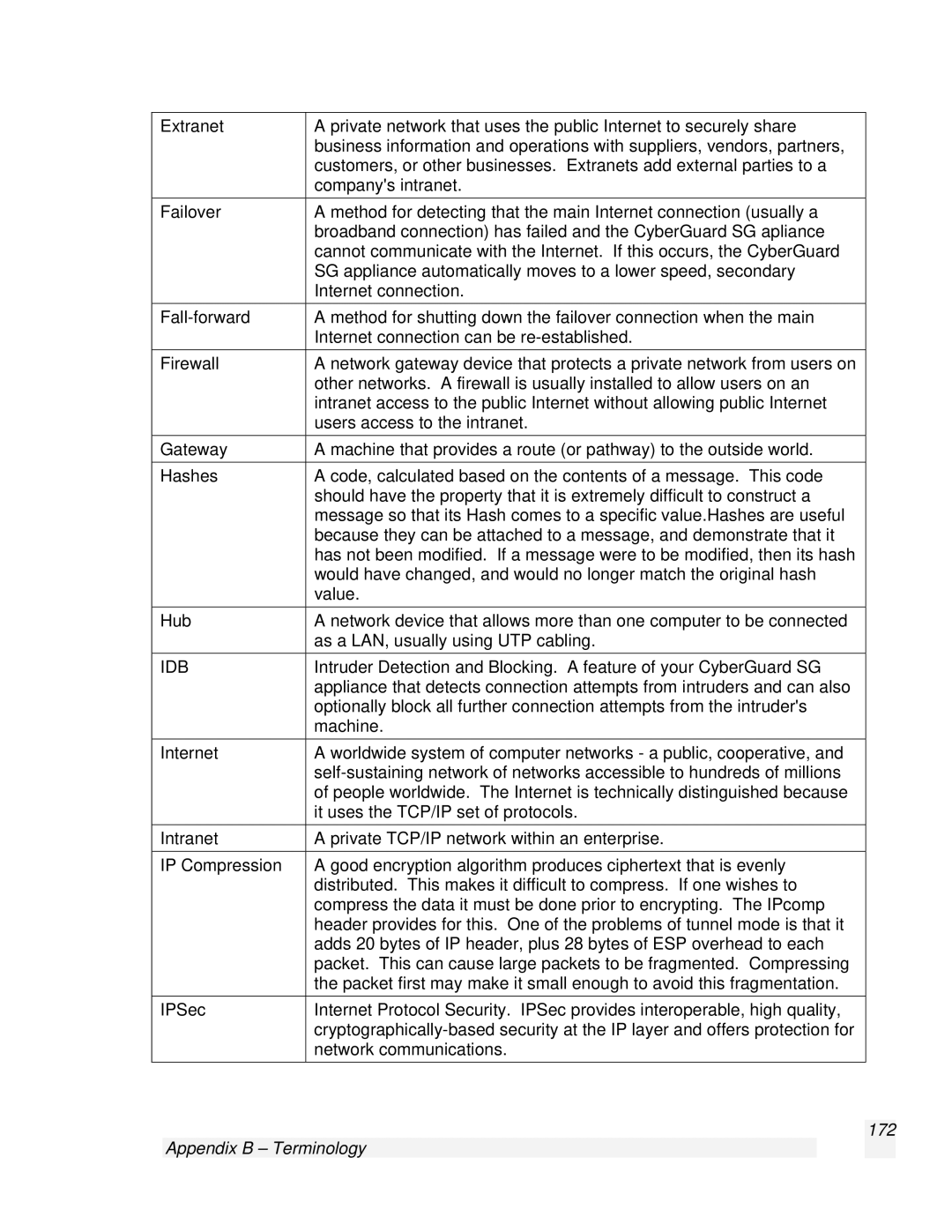
Extranet | A private network that uses the public Internet to securely share |
| business information and operations with suppliers, vendors, partners, |
| customers, or other businesses. Extranets add external parties to a |
| company's intranet. |
|
|
Failover | A method for detecting that the main Internet connection (usually a |
| broadband connection) has failed and the CyberGuard SG apliance |
| cannot communicate with the Internet. If this occurs, the CyberGuard |
| SG appliance automatically moves to a lower speed, secondary |
| Internet connection. |
|
|
A method for shutting down the failover connection when the main | |
| Internet connection can be |
|
|
Firewall | A network gateway device that protects a private network from users on |
| other networks. A firewall is usually installed to allow users on an |
| intranet access to the public Internet without allowing public Internet |
| users access to the intranet. |
|
|
Gateway | A machine that provides a route (or pathway) to the outside world. |
|
|
Hashes | A code, calculated based on the contents of a message. This code |
| should have the property that it is extremely difficult to construct a |
| message so that its Hash comes to a specific value.Hashes are useful |
| because they can be attached to a message, and demonstrate that it |
| has not been modified. If a message were to be modified, then its hash |
| would have changed, and would no longer match the original hash |
| value. |
|
|
Hub | A network device that allows more than one computer to be connected |
| as a LAN, usually using UTP cabling. |
|
|
IDB | Intruder Detection and Blocking. A feature of your CyberGuard SG |
| appliance that detects connection attempts from intruders and can also |
| optionally block all further connection attempts from the intruder's |
| machine. |
|
|
Internet | A worldwide system of computer networks - a public, cooperative, and |
| |
| of people worldwide. The Internet is technically distinguished because |
| it uses the TCP/IP set of protocols. |
|
|
Intranet | A private TCP/IP network within an enterprise. |
|
|
IP Compression | A good encryption algorithm produces ciphertext that is evenly |
| distributed. This makes it difficult to compress. If one wishes to |
| compress the data it must be done prior to encrypting. The IPcomp |
| header provides for this. One of the problems of tunnel mode is that it |
| adds 20 bytes of IP header, plus 28 bytes of ESP overhead to each |
| packet. This can cause large packets to be fragmented. Compressing |
| the packet first may make it small enough to avoid this fragmentation. |
|
|
IPSec | Internet Protocol Security. IPSec provides interoperable, high quality, |
| |
| network communications. |
